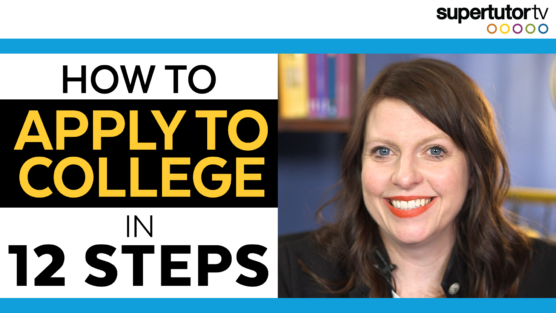How did I get into Stanford? I can’t totally be sure. But I can share with you what I shared in my application and why I think my application may have stood out from the others. I can also probably shed some light, from my 12+ years experience of coaching students through the admissions and essay writing process, on what distinguishes one application from another.
True, I got into Stanford over a decade ago. Times have changed. Admissions have become more competitive. What the 50th percentile on the SAT® then was vs. now for admits is a bit different– but so are the attitudes and habits of applicants. In my day, people rarely studied for the SAT®– now it’s the norm. In any case, though, the basics of what matters are still the same.
1. Vision
One element that Stanford seeks in its students is “intellectual vitality.” Call it curiosity, passion, or “learning for learning’s sake,” this drive to truly learn more about the world around you, to understand ideas you have yet to encounter, to make your mark on the world by imagining it to be what it still has not yet become– that’s the core of what drew me to Stanford and, what I believe, drew its admissions staff to me. At Stanford, I felt as though I could be a game changer, a world changer, a member of the community rather than a student who if my test scores were good enough the admissions staff might deign to admit. I think the university values every member of its dynamic community and I saw that energy and knew it was different from that of any other university I’d looked at. I fell in love with Stanford, and I think I communicated that excitement for the University’s vision in my application.
I’m not saying that being in “love” with a university is going to get you in. You have to have all the other pieces in place, too. Working with students as a consultant on their college essays and applications I’ve seen many students fall in love with universities and not be accepted, a few even accepted by higher ranked institutions than their “dream” college. I’ve seen some students, however, be the exception to the rule– the kid who gets into USC with particularly low test scores but a perfect GPA for example. And in terms of the most competitive schools, I would say over half the students I work with that are accepted at exceptional universities have specifically targeted their school of choice and tell a story that makes that school truly seem like a great fit.
Vision isn’t usually something that can override any deficiencies in your application. If you don’t have the caliber of accomplishment, grades, or scores a school needs to admit you, loving the school won’t get you in. But it is an energy that can distinguish an application.
2. Demographics
I graduated from high school from a public, large, well ranked suburban high school in Kansas, just outside Kansas City. Stanford, and many other top schools, pride themselves on demographic diversity. Part of that diversity is the goal to admit at least 1-2 people from every state in the union. At my high school, applying to schools outside about 800 miles driving distance was something of an anomaly. Sure, about 10 of us per year “got out” — but in all likelihood that “diversity” increased our (and my) chances at competitive schools.
The other advantage of coming from a small place is that it’s easier to stand out. It’s easier to win state championships, presidential scholar awards, and even National Merit Scholarships.
I know those of you from New York and the SF bay might be jealous, but that’s life. It’s not always fair. But it’s a factor to keep in mind. You will be considered, in part, based on your context.
3. Grades
I graduated in the top 2% of my class and was ranked 5th out of 475 seniors. I took every AP course that was humanly possible given my other commitments (I didn’t do AP Econ because it conflicted with orchestra, for example), and had two B+’s on my transcript — one in sophomore English (I hated fact recall pop quizzes — grrr– give me papers any day!) and another in Physics 2nd semester of senior year (senioritis!!). The rest were A’s or A-‘s. My school did not distinguish between A’s and A-‘s for GPA purposes, so all counted for the same amount of points in class rank, etc. I typically was taking “zero hour” classes, which also positively affected my GPA because our school’s formula somehow took into account how many courses you took, not just the grades you got.
4. Test Scores
In high school, I scored in the 99th percentile on the SAT® (perfectly on the math section) and called it a day. On more recent versions of the SAT® and ACT®, I’ve scored perfectly as an adult (though these didn’t count toward my Stanford application, obviously!). At the time, my score in Reading Comp was right at the 50th percentile of admitted Stanford freshman, and my Math section score was 75th percentile+.
If you want to be seriously considered, assuming you aren’t an athletic recruit, exceptionally accomplished in some other random way, or student from a challenging socio-economic context, it’s best to be at about the 50th percentile or above for the school(s) you’re applying to. If you’re not at the 25th percentile or above, know that an admission is pretty unlikely unless you’re a “special case” student (see that list above).
5. Activities
One thing that Stanford admissions counselors will tell you is that you have to be exceptional at something– it doesn’t really matter what that something is– fencing, synchronized swimming, curing cancer, tennis, ballet– but you have to be the best or one of the best given where you’re from. For me, that “talent” was playing flute. I played flute in band and orchestra at my high school and was part of the Kansas City Youth Symphony. As part of that organization, I had played at Carnegie Hall, placed regularly at state solo and ensemble contest, and made the cut for the state honor band sophomore year and on the piccolo, made the state orchestra senior year (something akin to being named the #1 piccolo player in the state of Kansas). I was also named musician of the year at my high school– and assume my name is still on some dusty plaque in the band hallway of my high school.
Do I play now? No. But in all likelihood that was a factor in my admission. I sent an “optional” audition tape to Stanford that was reviewed by the music department to supplement my Stanford application.
In addition to playing the flute, I was also hyper-involved in my school in other ways. I was in chorus, band, orchestra, theater (with sizable roles in a few plays), ran track, participated in National Honor Society, and was also on the cheerleading squad. Though I didn’t start any clubs I have a few leadership roles here or there.
6. Essays
At the time I applied, Stanford had some quintessential essays that were always on its applications. Here’s how I tackled them.
The Stanford Roommate essay:
This one still exists– it’s a supplemental short essay on the Common App.
Though I’m sure it felt a bit forced, I wrote about an experience I had as a juvenile prison volunteer. Basically, this girl had explained to me how she wanted to be in “juvy” because her mom was abusive and she could get food regularly there (as opposed to how it was at home). I don’t know if she was telling me the truth– but even the thought of imagining such a circumstance seemed so beyond the world I lived in.
The picture essay:
No longer an essay on the Common app, this question asked you to send a picture and then write an essay on that picture and its significance.
I had done a creative performance slide show in my drama class and we had taken pictures of all these people holding a sign that said “love.” I told the story of how we all worked together and also discussed the idea of expressing social / political ideas with creativity (i.e. promoting diversity etc.).
Describe something you’ve heard, read, or seen that has had an impact on you:
I wrote about Jane Eyre– my favorite book in high school. I loved how Jane was this plain, small person but had so much grit and guts and strength. She was this tenacious underdog. I really related to that.
In terms of what I think I was able to communicate in all three essays: my passion for learning, my love of creativity and my desire to understand others even if they weren’t like me.
So there you have it! Hopefully this post will help you sort through what you can offer in your own college application.




